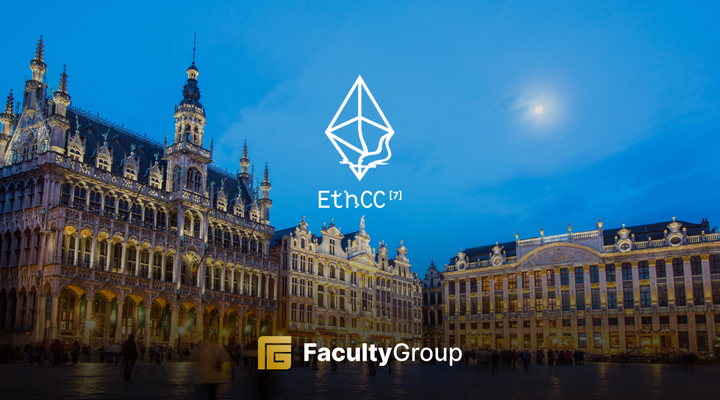Arbitrum vs Optimism: L2 scaling ramps up

In addition to the projects building in the LSD space, Arbitrum and Optimism are Ethereum’s most popular Layer2 rollup scaling solutions designed to improve the network scalability and reduce gas fees for decentralised applications. Today we’re exploring Arbitrum v. Optimism, how ARB’s airdrop has shaken up the current paradigm, contrasting their differing approaches to scaling and decentralisation, and their future development plans for Layer3.
Arbitrum is the largest Layer 2 scaling solution by TVL and having flipped Ethereum for trading volumes earlier this year, users are clearly flocking to its network. It uses a technology called optimistic rollups (a type of zkrollups) to process a large number of transactions off-chain and then batch records them onto the Ethereum mainnet. Developers can deploy their existing contracts to Arbitrum with minimal changes, making it easy for them to scale their applications without having to rewrite code.
One measure implemented by Arbitrum to ensure security is the use of a fraud-proof system which allows users to submit proof of invalid transactions and receive rewards for doing so. This incentivises users to monitor the network for suspicious activity and helps to prevent fraudulent transactions.
Arbitrum also uses "Rollup Chain" technology that separates data from the computation. This means the data is stored on the Ethereum mainnet, while the computations are done off-chain. This separation makes the system more secure and private.
Optimism, the next biggest Layer 2 scaling solution, uses optimistic rollups to process transactions off-chain and is compatible with existing smart contracts on Ethereum. Optimism focuses on decentralisation, with its consensus mechanism relying on a decentralised network of validators. The key advantage of Optimism is its speed. It can process transactions faster than the Ethereum mainnet, benefitting applications requiring fast transaction times.
Coinbase’s announcement of its new L2 blockchain, Base and joining the OP Stack codebase as a core developer boosted Optimism. Base will return a portion of transaction fee revenue to Optimism Collective treasury. In the near term, this collaboration will strive to upgrade OP Mainnet, Base, and other L2s to an initial Superchain structure with shared bridging and sequencing. In the long term, the Superchain could create a sprawling network that maximises interoperability and shares decentralised protocols.
What are the differences?
While Arbitrum and Optimism share many similarities in their vision and tech stacks, the two solutions have several key differences regarding security, decentralisation, consensus mechanisms and their plans for Layer3s. Let’s look at each in turn.
Security
Arbitrum's focus on security is evident from the measures it has implemented to prevent fraud and ensure the safety of user funds. In addition to the fraud-proof system mentioned earlier, Arbitrum uses a "challenge period" to allow users to dispute invalid transactions. Arbitrum also uses a "commitment chain" to ensure the integrity of the off-chain transactions. This chain records all the off-chain transactions that have been processed and are stored on the Ethereum mainnet. It is secured by the same consensus mechanism as the mainnet, making it highly resistant to attacks.
Furthermore, Arbitrum has implemented several measures to prevent reentrancy attacks, which can be used to steal funds from smart contracts. These measures include a "nested call limit" that limits the number of times a smart contract can call another contract and a "precondition check" that ensures the necessary conditions are met before executing a transaction.
Decentralisation
Arbitrum uses a two-layer approach to achieve decentralisation. Arbitrum uses a Proof-of-Stake (PoS) consensus mechanism called "Federated Bridge" to secure its network. This mechanism uses a group of validators selected based on their stake in the system to validate transactions and secure the network. This separation makes the system more secure.
Optimism, on the other hand, uses a more decentralised approach to consensus. It uses a PoS consensus mechanism called "Optimistic Rollup", which relies on a decentralised network of validators to validate transactions. These validators are chosen randomly from a pool of stakers who have deposited their tokens into the system. This approach ensures that a single entity does not control the network and is more resistant to attacks.
Consensus mechanisms
While Arbitrum's approach is more centralised, with a group of validators securing the network, Optimism's approach is more decentralised, with a pool of stakers validating transactions.
Future Plans for Layer3
ARB’s recent announcement clarified how the Arbitrum team intends to scale the Arbitrum network and, thus, the future of Ethereum. Arbitrum Orbit will allow for the permissionless creation of L3 chains – rollups settling to Arbitrum – while requiring DAO approval to use Arbitrum IP to create L2s. Orbit provides a direct value accrual model for ARB token holders: L3s built on Arbitrum must pay fees to Arbitrum sequencers. This capture is unique to Arbitrum and is a novel solution to open-sourcing code and generating economic benefits.
In essence, Arbitrum is granting IP rights for creating L2s to the Arbitrum DAO while allowing for the permissionless creation of L3s with Orbit. Instead of enabling the competition to spin up chains directly competing with Arbitrum, the DAO can dictate terms and may even elect to prohibit L2 competitors from forking Arbitrum tech.
Separating IP between permissioned L2 and permissionless L3 deployments gives Arbitrum (and L3 devs) the best of both worlds. Developers on Orbit will contribute to the leading L2 codebase while inheriting Nitro’s and Stylus’ compression and programming advantages.
In contrast, the OP Stack “Superchain” vision is a model that opens-sources Optimism’s code for the permissionless creation of L2s with shared sequencer sets. Inherently, the OP Stack empowers Optimism competitors. While the future of the OP Stack aims to allow chain-sharing sequencer sets the ability to conduct atomic transactions, there is no guarantee that a chain will opt into this shared security framework.
Optimism runs the risk that another general-purpose rollup, built on its tech stack, may steal liquidity and users directly from them. There are also zero guarantees that these chains will be as charitable as Base and decide to share fee income with Optimism.
In conclusion, liquidity begets liquidity. With the number of active users and TVL continuing to grow, Arbitrum is winning developers and users into their ecosystem and away from Optimism. It will be interesting to see what happens beyond ARB and the token drop. Optimism also benefited from its token launch and the resulting growth in users. History often rhymes. Continuation is the key to success for L2s; survival depends on creating user traction and ecosystem growth that is organic and based on token value accrual from the network, not token hype.








